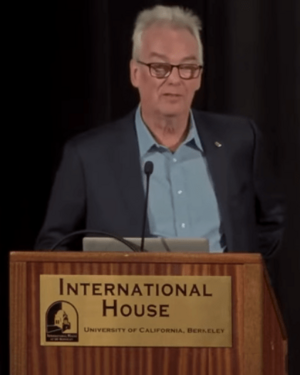Richard Harland (biologist) facts for kids
Quick facts for kids
Richard Harland
|
|
|---|---|
 |
|
| Born |
Richard M. Harland
|
| Alma mater | University of Cambridge (PhD) |
| Awards | Member of the National Academy of Sciences (2014) |
| Scientific career | |
| Fields | Developmental biology |
| Institutions | University of Cambridge Laboratory of Molecular Biology Fred Hutchinson Cancer Research Center University of California, Berkeley |
| Thesis | Control of chromosomal replication (1980) |
| Doctoral advisor | Ron Laskey |
Richard M. Harland is a very important professor at the University of California, Berkeley. He is known as a Distinguished Professor of Genetics, Genomics, and Development. This means he studies how living things grow and change from tiny beginnings.
Contents
Studying Life's Beginnings
Richard Harland earned his PhD, which is a very high university degree, at the University of Cambridge in the United Kingdom. He worked at the Medical Research Council's Laboratory of Molecular Biology. His main focus was on how DNA copies itself in the early stages of Xenopus embryos. Xenopus is a type of frog often used in science.
A Career in Scientific Discovery
After finishing his PhD, Dr. Harland continued his research at the same lab in Cambridge. He also worked at the Fred Hutchinson Cancer Research Center in Seattle. In 1985, he moved to the University of California, Berkeley, where he has been ever since.
Understanding Early Development
Dr. Harland's research helps us understand how vertebrate animals, like humans and frogs, develop from a single cell. He looks at this process at a very tiny level, called the molecular level. His work has greatly helped scientists understand how an early embryo forms. He also studies how the neural plate, which later becomes the brain and spinal cord, is created and shaped. Another key area of his research is the Spemann-Mangold organizer, a special part of the embryo that guides how other parts develop.
Recognized for His Work
Dr. Harland has received important awards for his scientific contributions. In 2014, he was chosen as a Member of the National Academy of Sciences in the United States. This is a big honor for scientists. In 2019, he was also elected a Fellow of the Royal Society (FRS) in the UK. This award recognized his "substantial contributions to the improvement of natural knowledge."

